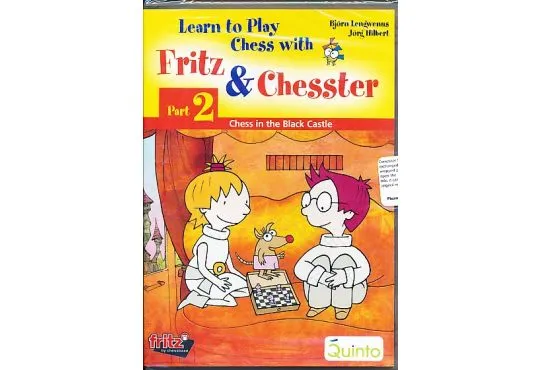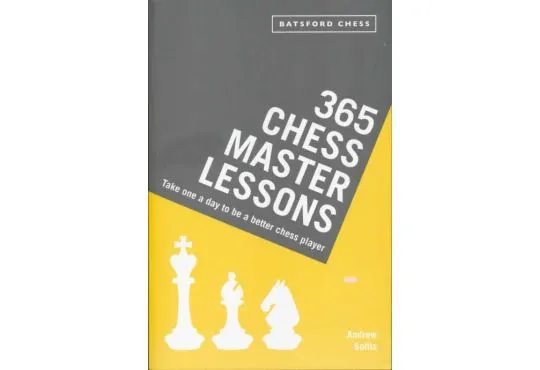All You Need To Know About Castling in Chess
One of the first rules chess players must get to grips with is castling. Castling in chess can be difficult to get the hang of for those new to the game - and even some of those who have played chess for a quite while still do not know all the finer points of castling.
This guide is here to help. After reading it, you will know exactly how to castle, according to the official rules of chess.
You will learn:
- What castling is and why it is important.
- How castling works, illustrated with examples.
- Answers to some common questions about castling.

What Is Castling?
In castling, the king and rook are allowed to make a special maneuver which moves the king towards the side of the board, and the rook towards the center. Castling is the only move in chess where two pieces can move in a single turn.
Related: Click here to learn about the history of castling.
Let’s now see castling in action.
The below diagram shows White ready to castle.
Next, we can see the same game one move later, with White having completed castling. Notice that the White king now sits on g1, while the White rook has hopped over to f1. Here we may say that White “has castled”.

Why Is Castling In Chess Important?
It is usually a good idea to castle your king early in the game - especially for beginners.
The two main benefits of castling are:
- It gets the king to a safer place: In the middlegame, the king is usually safer towards the edge of the board than in the center.
- It activates the rook: Without castling, it can be difficult to develop the rook out of the corner. Castling helps get the rook towards the center and into the action.
Related: 1001 Chess Exercises For Beginners, available from the USCF store.
The Rules Of Castling In Chess
For castling to be possible:
- All squares must be clear between the king and the rook.
- The king must not have moved off its starting square at any point previously.
- The rook which is participating in the castling must also not have moved.
- The king cannot be in check.
- Nor can the king castle across a square which is controlled by an enemy piece.
-
 CLEARANCE - Attacking a King which has Castled Short - Valeri LilovSpecial Price $15.00 Regular Price $30.95
CLEARANCE - Attacking a King which has Castled Short - Valeri LilovSpecial Price $15.00 Regular Price $30.95
It is also important to know that castling can be done in two directions.
- If castling is performed with the rook on h1 (for White) / h8 (for Black), we call it “castling kingside”, or “castling short”.
- If castling is performed with the rook on a1 (for White) / a8 (for Black), we call it “castling queenside”, or “castling long”.
We will now give examples of each.
Castling Kingside / Castling Short
In the below diagram, White is ready to castle kingside. Once castling is completed, the White rook will be on f1 and the White king will sit on g1.
The next image shows the position once castling kingside has been completed.
If you are playing in a chess competition where it is required to write down your moves, castling kingside is written as: 0-0.
Castling Queenside
In the below diagram, White is ready to castle queenside. Once castling is completed, the White rook will be on d1 and the White king will sit on c1.
The next image shows the position once castling queenside has been completed.
If you are playing in a chess competition where it is required to write down your moves, castling queenside is written as: 0-0-0.
How To Remember The Squares
This guide makes it easy to see where the king and rook end up after castling - but you cannot have this guide with you while playing in a competitive chess game!
To help remember which squares the king and rook finish upon following the castling maneuver, just remember these two things:
- The king always moves two squares.
- The rook ends up on the other side of the king, immediately adjacent to it.
Related: Grab a chess set you can take anywhere from the USCF store.
How To Castle In A Chess Game
Assuming that all the conditions for castling are satisfied, you next need to know how to actually do it - both online and offline.
How To Castle In Online Chess
To castle in an online chess platform such as chess.com or lichess:
- First, click your king (to select it).
- Next, click the destination square where the king will end up once it is castled (remember, this is two squares away from the king’s starting position: either g1 or c1 - depending on whether you are castling kingside or queenside).
The below diagram highlights the two squares White needs to click in order to castle kingside in online chess: first, the king on e1 and then the destination square on g1. The rook will then move to the correct place (the f1 square) automatically.
How To Castle In Over-The-Board (Real-Life) Chess
The most important thing to remember when castling in real-life chess is to move the king first and the rook second. This is worth emphasizing, because quite a few players get it wrong!
- Moving the rook first and then the king is incorrect.
- Moving both the king and the rook simultaneously is also incorrect.
If you are playing a casual chess game with a friend, your opponent probably will not mind if you castle in an improper way.
However, if you play in a serious chess tournament, there is every chance that your opponent will report incorrect castling to the arbiter. The arbiter is obliged to enforce the correct rules - even if you did not know them.
The most likely outcome of picking up the rook first (before the king) is that the arbiter will rule that your rook can move to the square you dropped it, but your king cannot complete the castling maneuver and therefore must stay where it is.
If you move your rook first (before the king), your move will probably be ruled to be Rf1 instead of castling.
Get into good habits now, by practicing the correct way to castle - even in your casual games!
-
 CLEARANCE - Learn to Play Chess With Fritz and Chesster - Vol. 2 Chess in the Black CastleSpecial Price $15.00 Regular Price $33.95
CLEARANCE - Learn to Play Chess With Fritz and Chesster - Vol. 2 Chess in the Black CastleSpecial Price $15.00 Regular Price $33.95
More On The Official Rules Of Chess
We hope you have enjoyed this guide to castling in chess.
Castling is just one of the many rules of chess which can cause confusion. Other rules that every chess player should know (but often get wrong) include:
- What to do in case your opponent makes an illegal move.
- The correct way to offer or claim a draw.
- En passant.
To ensure you know the rules, we recommend investing in a copy of the Official Rules of Chess, available from the USCF store.
This is the authoritative reference guide, published by the US Chess Federation - the governing body for chess in the United States. No serious chess player should be without it! Click here to get yourself a copy.
Frequently Asked Questions
No. It is not allowed to castle while the king is in check.
No. You cannot castle if your king must pass through any square controlled by an enemy piece. However, the rook involved in the castling may pass through a square controlled by an enemy piece - it is only the king which cannot.
Yes - so long as the king did not move. If the king was previously in check, but then escaped the check without moving away from its initial square, the king may still castle later.







